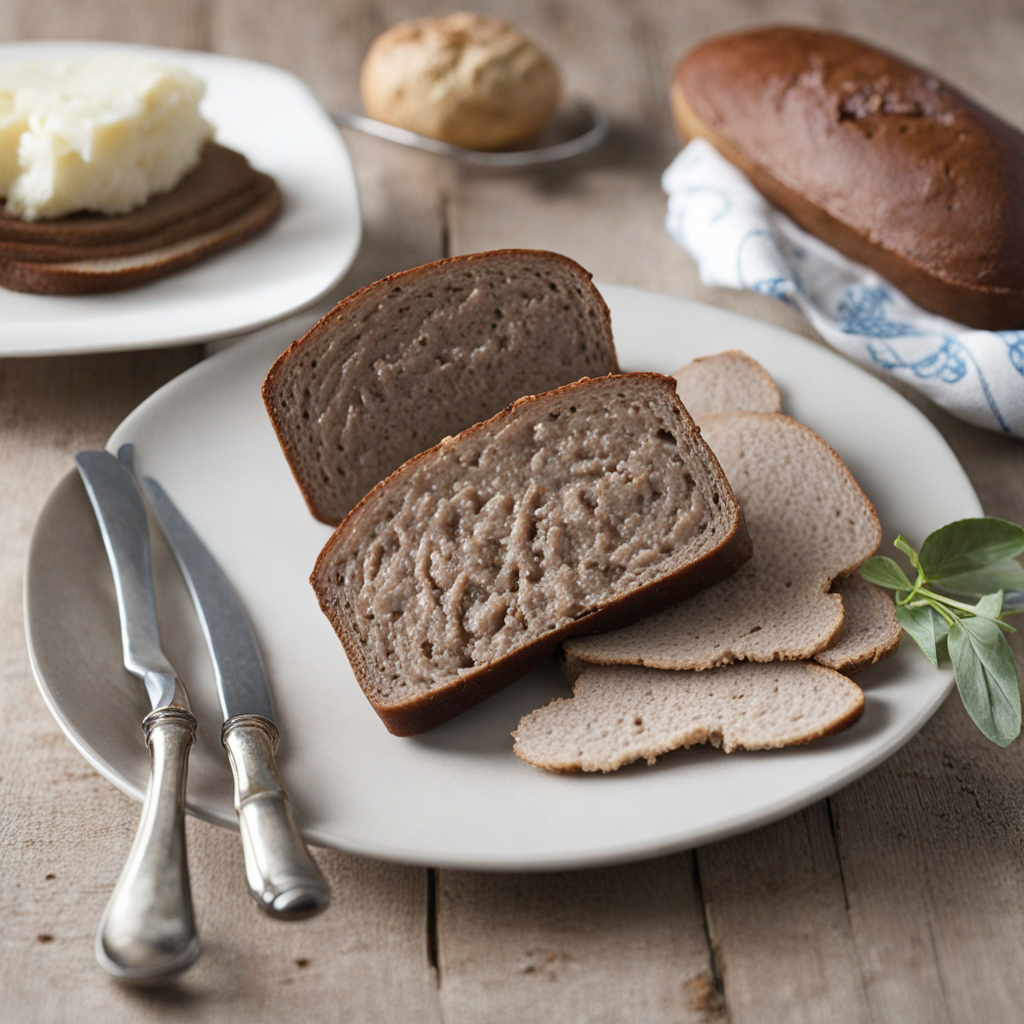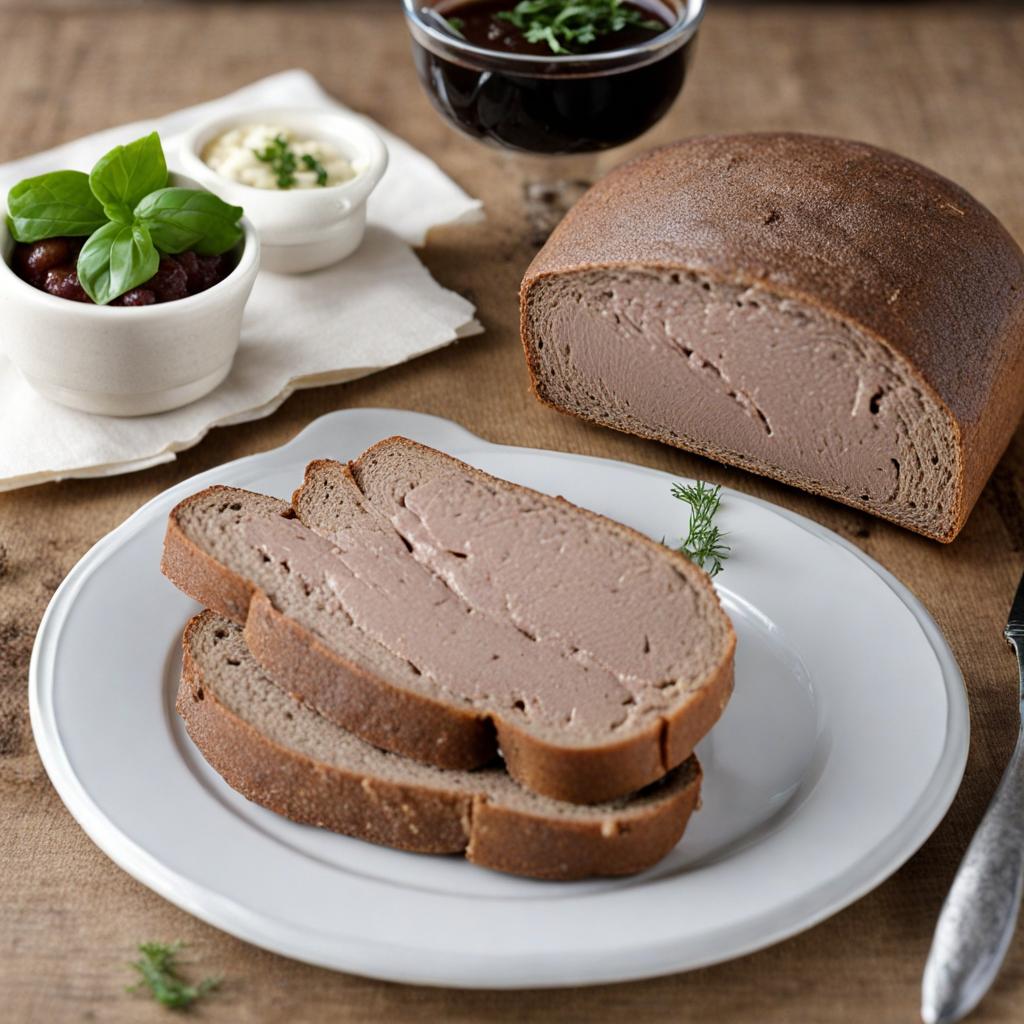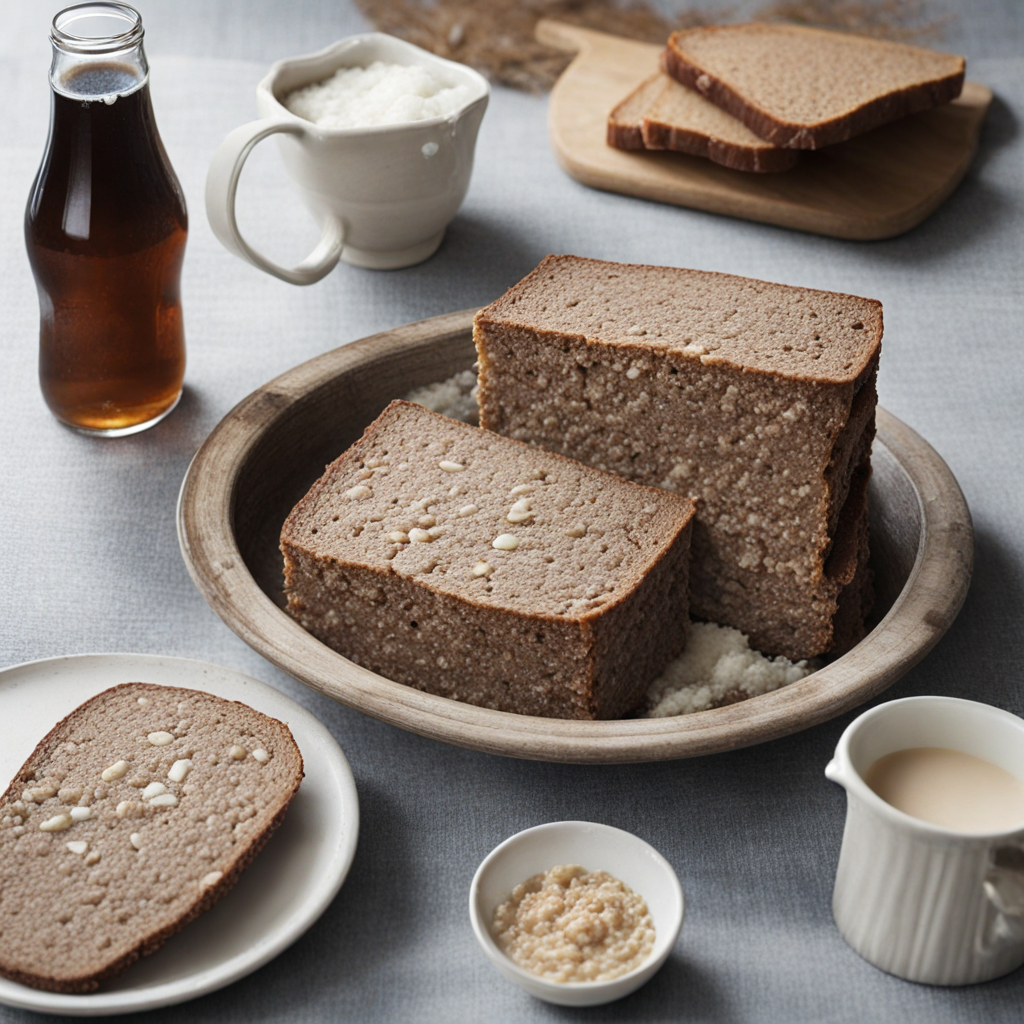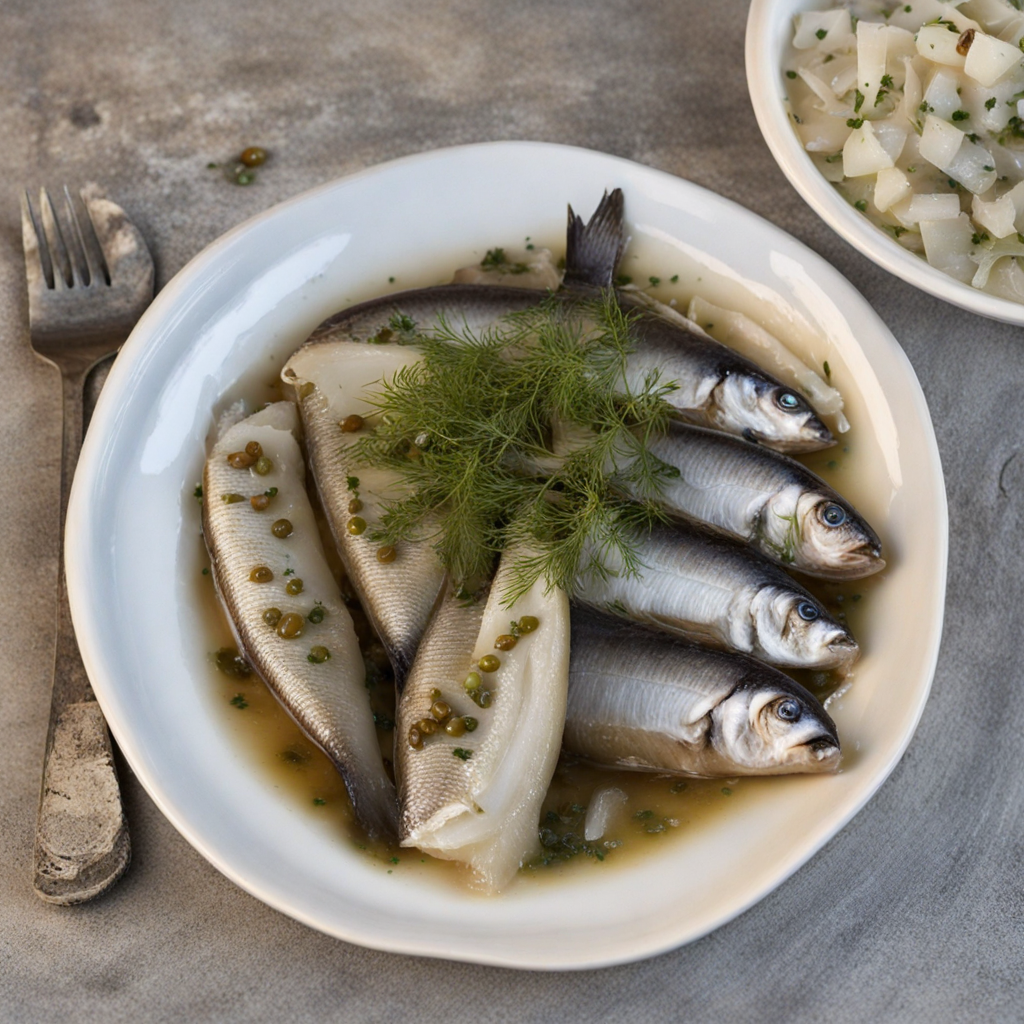Leverpostej
Leverpostej is a traditional Danish liver pâté that embodies the rich culinary heritage of Denmark. This creamy spread is primarily made from pork liver, which is finely ground and blended with a mix of spices, onions, and sometimes bacon or herbs. The result is a velvety texture that melts in your mouth, offering a savory experience that is both comforting and indulgent. Leverpostej is often seasoned with salt, pepper, and nutmeg, creating a well-rounded flavor profile that highlights the natural richness of the liver while introducing subtle aromatic undertones. Typically served on rye bread, a staple in Danish cuisine, Leverpostej can be enjoyed in various ways. It is commonly garnished with crispy fried onions, pickles, or beets, adding a delightful crunch and tang that complements the smoothness of the pâté. The combination of the hearty rye and the lush pâté creates a satisfying contrast that makes it a popular choice for open-faced sandwiches, known as smørrebrød. This dish is not only a delicious meal but also a visual feast, showcasing the artistry of Danish food presentation. Leverpostej is a versatile dish that can be enjoyed at any time of the day, whether as a hearty breakfast, a light lunch, or as part of a festive spread during celebrations. Its unique flavor and texture make it a beloved staple in Danish households, and it is often found in delis and restaurants across the country. For those looking to expand their culinary horizons, tasting Leverpostej is an invitation to explore the comforting flavors of Denmark and experience a dish that is deeply rooted in tradition and local pride.
How It Became This Dish
The History of Leverpostej: Denmark's Beloved Liver Pâté Origins and Early Development Leverpostej, the traditional Danish liver pâté, is a culinary gem that embodies the rich agricultural and culinary heritage of Denmark. Its name derives from "lever," meaning liver, and "postej," meaning pâté or paste. The exact origins of leverpostej are somewhat murky, but it is believed to have roots that stretch back to medieval times when preservation methods for meats were essential for survival through harsh winters. In medieval Europe, liver was a common part of the diet, especially among the nobility, who sought to showcase their wealth through elaborate dishes. The practice of grinding and mixing liver with spices, fats, and other ingredients to create a spreadable paste likely evolved from earlier techniques used in France and Germany. The earliest Danish recipes date back to at least the 17th century, where they were often referenced in cookbooks that aimed to document the burgeoning Danish cuisine. Cultural Significance Leverpostej is more than just a dish; it is a staple of Danish culture and identity. It is commonly served in homes across Denmark and is a popular item in cafes and restaurants. Typically enjoyed on rye bread (rugbrød), it is often garnished with a variety of toppings, such as pickles, crispy onions, or even sautéed mushrooms. The simplicity of this presentation reflects the Danish ethos of "hygge," emphasizing comfort, togetherness, and the enjoyment of good food. In contemporary Denmark, leverpostej is a beloved part of daily life. It is frequently featured in lunchboxes for children and adults alike, making it a symbol of the Danish approach to wholesome, straightforward meals. Leverpostej is not only enjoyed at home but also plays a significant role in social gatherings and celebrations. It is frequently served during festive occasions and holidays, such as Christmas, where it might be accompanied by a selection of other traditional Danish foods. Ingredients and Preparation The traditional recipe for leverpostej typically includes liver, most commonly pork or beef liver, combined with a variety of ingredients such as onions, flour, butter, and spices like nutmeg and allspice. The liver is cooked and then puréed, resulting in a smooth consistency. The mixture is then baked in a terrine or loaf pan, creating a hearty and flavorful pâté that can be stored for several days. In modern times, variations of leverpostej have emerged, including vegetarian and vegan alternatives, as dietary preferences evolve. However, the classic form remains the most beloved and is a staple in Danish households. Development Through the Ages As Denmark entered the 19th century and the Industrial Revolution progressed, the production of leverpostej underwent significant changes. The advent of canning and preservation techniques allowed for mass production, and leverpostej began to be sold in supermarkets and delicatessens. This shift made it more accessible to the general population and helped cement its status as a national dish. The 20th century saw further innovations in recipes and flavors. As the world became more interconnected, Danish cooks began to experiment with international influences, incorporating ingredients from outside the traditional realm. Today, one can find varieties of leverpostej that feature added elements like chili, garlic, or herbs, reflecting global culinary trends while maintaining the essence of the original dish. In Denmark, leverpostej is often associated with nostalgia, evoking memories of childhood lunches or family gatherings. This emotional connection has been key to its enduring popularity. Traditional recipes are often passed down through generations, with families holding onto their unique methods of preparation, which can lead to friendly rivalries over whose version is the best. Leverpostej in Contemporary Danish Cuisine In the contemporary culinary landscape of Denmark, leverpostej has not lost its charm. It is celebrated in food festivals and is often featured in modern restaurants that focus on traditional Danish fare. Chefs may take creative liberties, pairing the pâté with artisanal breads, gourmet toppings, and inventive side dishes that elevate its status from humble comfort food to a refined delicacy. Leverpostej is also a symbol of the increasing interest in local and sustainable ingredients. Many Danish cooks are returning to traditional methods, sourcing liver from local farms that prioritize animal welfare and sustainable practices. This trend not only pays homage to the dish's historical roots but also aligns with the broader movement towards sustainable food practices. Global Recognition and Influence As Danish cuisine has gained recognition on the global stage, so too has leverpostej. With the rise of Nordic cuisine and the popularity of restaurants like Noma, which emphasizes local and seasonal ingredients, traditional dishes like leverpostej have found a new audience. International visitors to Denmark often seek out authentic culinary experiences, and leverpostej is frequently highlighted as a must-try dish. The global interest in Danish food culture has inspired many to try their hand at making leverpostej at home, leading to an uptick in online recipes and cooking tutorials. This has not only spread awareness of the dish but has also allowed for a dialogue around its preparation, variations, and cultural significance. Conclusion Leverpostej is more than just a pâté; it is a representation of Danish heritage, comfort, and community. Its journey from medieval kitchens to modern-day dining tables encapsulates the evolution of Danish cuisine, reflecting both tradition and innovation. As it continues to be celebrated both in Denmark and abroad, leverpostej remains a beloved emblem of Danish culinary identity, proving that some dishes can stand the test of time while adapting to the tastes and values of new generations. Whether enjoyed on a simple slice of rye bread or as part of a gourmet meal, leverpostej is sure to remain a cherished staple in the hearts—and stomachs—of many.
You may like
Discover local flavors from Denmark







